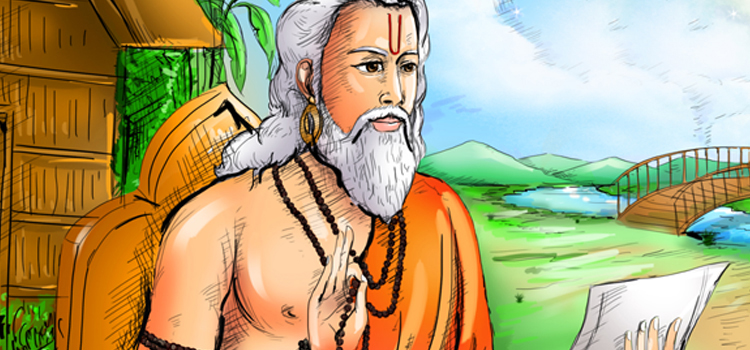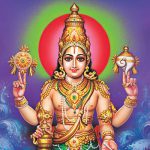Introduction
Maharshi Valmiki is the author of the Hindu epic Ramayana, which nearly contains 24,000 verses. He was born in the Treta Yuga. The Valmiki Ramayana dates from 500 BC to 100 BC. Valmiki is also said to have authored Yoga Vasistha that explains several philosophical issues. Valmiki was said to be the contemporary of Shri Rama.
Sita is said to have taken refuge in his ashram when she had the twins, Lava and Kusha.
Valmiki’s Early Life
Valmiki was born to Sage Prachetasa as Ratnakar. He lost his way in the forest at a very young age. A hunter found him and decided to have him in his care. Ratnakar turned out to be an exceptional hunter. He was later married. Finding it extremely difficult to provide for his family, Ratnakar took to robbery. He robbed people passing through the forest and took care of his family. The divine Sage Narada was passing through the forest one day when Ratnakar attacked him. Narada played the veena and sang in praise of God. As Ratnakar gazed into Narada’s eyes, he found himself changing.
Sage Narada asked Ratnakar whether his family would partake of his sins as he had taken to robbery to feed them. Ratnakar went home and asked the same question. However, no one was willing to share his burden. Ratnakar returned to Narada. The divine sage taught him to chant the name of Ram and asked him to meditate until he returned.
Ratnakar undertook the instructions of Sage Narada and sat in a meditative pose, chanting the name of Ram. Years passed, and Ratnakar was covered by anthills. Sage Narada returned and removed the anthills surrounding Ratnakar. He told Ratnakar that God was pleased with his penance, and he would henceforth be called Brahmarshi. Ratnakar henceforth came to be known as Valmiki, since he was reborn from the anthills (Valmika). The sage built his ashram on the banks of the river Ganga.
The Ramayana
Sage Narada visited Maharshi Valmiki at his ashram, and Valmiki asked him who the ideal man was. Sage Naradanarrated the story of Shri Rama in the form of Samkshepa Ramayana,which was to form the foundation of the epic 24,000 verses. Valmiki left with his disciple Bharadwaj for the river Tamasa, the story deeply embedded in his mind. The serene and placid nature of the river reminded him of the modest quality of the protagonist. As he was visualizing the image of a pure and pious man, he was interrupted by the cry of a male swan, which was mating, hit by the arrow of a hunter. The distressed wails of the female swan moved the sage, and he spontaneously uttered a curse on the hunter, which came out in the form of a sloka. He was surprised at himself.
Later, the sage received a vision of Brahma, the Creator, who advised Valmiki to write the Ramayana in slokas. The sage followed his advice. Valmiki composed the entire Ramayana with the blessings of Brahma.
Meeting with Shri Rama
Maharshi Valmiki had the good fortune of receiving Shri Rama along with his wife Sita and his brother Lakshmana at his ashram. He advised Shri Rama to build his hut at Chitrakuthill, located near his ashram. Valmiki also gave shelter to Sita when Rama banished her from Ayodhya. Her sons, Lava, and Kushawere born in his hermitage. He later taught the Ramayana to Lava and Kusha. The twins later sang the divine story in Ayodhya during the ceremony of the Ashwamedha Yagna. Valmiki is called the Adi Kavi (first poet), the original Creator of the Hindu sloka.


Thanks for sharing. I read many of your blog posts, cool, your blog is very good.
Thanks for sharing. I read many of your blog posts, cool, your blog is very good.